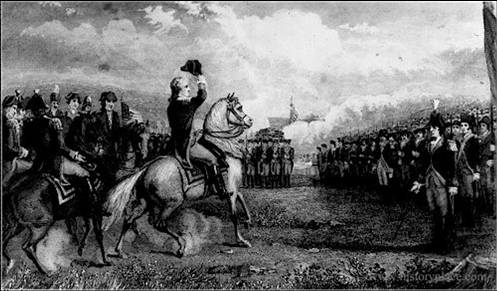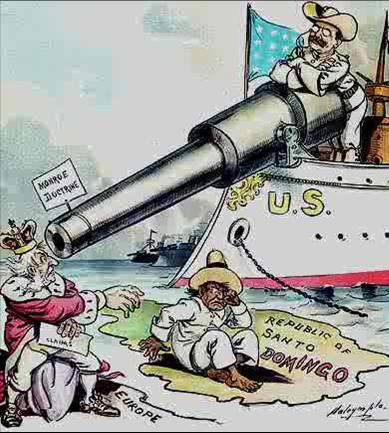APUSH Summer Assignment 1 -- due June 28:
Submit answers to montclairapush@hotmail.com
ID\SIGs: BAILEY CHAPTER 1-3, pp. 1-63
Chapter 1
New World Beginnings
Pgs. 1-20
Marco Polo
Francisco Pizarro
Francisco Coronado
Vasco da Gama
Hernan Cortes
Christopher Columbus
Junipero Serra
Montezuma
Malinche
Renaissance
mestizo
conquistadores
encomienda
Treaty of Tordesillas
black legend
Chapter 2
Planting of English America
Pgs 25-40
John Rolfe
Francis Drake
Lord Baltimore
Humphrey Gilbert
Oliver Cromwell
Walter Raleigh
James Olgethorpe
John Smith
national-state
yeoman
joint-stock company
proprietor
slavery
squatter
enclosure
primogeniture
royal charter
indentured servitude
slave codes
House of Burgesses
Spanish Armada
Act of Toleration
Virginia Company
Restoration
Chapter 3
Settling the Northern Colonies 1619-1700
Pgs. 42-63
John Calvin
Thomas Hooker
Anne Hutchinson
William Penn
Roger Williams
John Cotton
Peter Stuyvesant
Sir Edmund Andros
William Laud
the “elect”
“visible saints”
franchise
conversion
patroonship
doctrine of a calling
predestination
covenant
freemen
antinomianism
Protestant Reformation
Puritans
Pilgrims
General Court
New England Confederation
Dutch West India Company
Calvinism
Separatists
Massachusetts Bay Company
Bible Commonwealth
Dominion of New England
Quakers
Institutes of the Christian Religion
Navigation Laws
Protestant ethic
Great Puritan Migration
Mayflower Compact
Glorious Revolution
Fundamental Orders
ZINN STUDY QUESTIONS: CHAPTER 1, pp. 1-22
1. According to Zinn, what is his main purpose for writing A People’s History of the United States?
2. What is Zinn’s thesis for pages 1-11?
3. According to Zinn, how is Columbus portrayed in traditional history books?
4. Why does Zinn dispute Henry Kissinger’s statement: "History is the memory
of states?"
5. What is Zinn’s basic criticism of historian Samuel Eliot Morison’s book,
Christopher Columbus, Mariner?
6. What major issues does Bartolome de las Casas bring up regarding Spanish
expeditions in the Caribbean?
7. Identify one early and one subsequent motive that drove Columbus to
oppress indigenous peoples.
8. What was the ultimate fate of the Arawak Indians?
9. What was the significance of Quetzalcoatl?
10. Compare the strategies and motives underlying the conquest of the Aztecs by
Cortez and the conquest of the Incas by Pizzaro.
11. What were the major causes of war between the Powhatans and the English
settlers?
12. Discuss the significance of Powhatan’s statement, "Why will you take by force what you may have quietly by love?"
13. Explain Governor John Winthrop’s legal and biblical justification for seizing
Indian land.
14. Explain the main tactic of warfare used by the English against the Indians.
15. According to Roger Williams, how did the English usually justify their attacks
on the Indians?
16. What ultimately happened to the estimated 10 million Indians living in North
America at the time of Columbus’ arrival?
17. Evaluate the statement: "If there are sacrifices to be made for human
progress, is it not essential to hold to the principle that those to be sacrificed
must make the decision themselves?"
18. How does Zinn attempt to prove that the Indians were not inferior? Provide
examples.
ID\SIGs: BAILEY CHAPTER 1-3, pp. 1-63
Chapter 1
New World Beginnings
Pgs. 1-20
Marco Polo
Francisco Pizarro
Francisco Coronado
Vasco da Gama
Hernan Cortes
Christopher Columbus
Junipero Serra
Montezuma
Malinche
Renaissance
mestizo
conquistadores
encomienda
Treaty of Tordesillas
black legend
Chapter 2
Planting of English America
Pgs 25-40
John Rolfe
Francis Drake
Lord Baltimore
Humphrey Gilbert
Oliver Cromwell
Walter Raleigh
James Olgethorpe
John Smith
national-state
yeoman
joint-stock company
proprietor
slavery
squatter
enclosure
primogeniture
royal charter
indentured servitude
slave codes
House of Burgesses
Spanish Armada
Act of Toleration
Virginia Company
Restoration
Chapter 3
Settling the Northern Colonies 1619-1700
Pgs. 42-63
John Calvin
Thomas Hooker
Anne Hutchinson
William Penn
Roger Williams
John Cotton
Peter Stuyvesant
Sir Edmund Andros
William Laud
the “elect”
“visible saints”
franchise
conversion
patroonship
doctrine of a calling
predestination
covenant
freemen
antinomianism
Protestant Reformation
Puritans
Pilgrims
General Court
New England Confederation
Dutch West India Company
Calvinism
Separatists
Massachusetts Bay Company
Bible Commonwealth
Dominion of New England
Quakers
Institutes of the Christian Religion
Navigation Laws
Protestant ethic
Great Puritan Migration
Mayflower Compact
Glorious Revolution
Fundamental Orders
ZINN STUDY QUESTIONS: CHAPTER 1, pp. 1-22
1. According to Zinn, what is his main purpose for writing A People’s History of the United States?
2. What is Zinn’s thesis for pages 1-11?
3. According to Zinn, how is Columbus portrayed in traditional history books?
4. Why does Zinn dispute Henry Kissinger’s statement: "History is the memory
of states?"
5. What is Zinn’s basic criticism of historian Samuel Eliot Morison’s book,
Christopher Columbus, Mariner?
6. What major issues does Bartolome de las Casas bring up regarding Spanish
expeditions in the Caribbean?
7. Identify one early and one subsequent motive that drove Columbus to
oppress indigenous peoples.
8. What was the ultimate fate of the Arawak Indians?
9. What was the significance of Quetzalcoatl?
10. Compare the strategies and motives underlying the conquest of the Aztecs by
Cortez and the conquest of the Incas by Pizzaro.
11. What were the major causes of war between the Powhatans and the English
settlers?
12. Discuss the significance of Powhatan’s statement, "Why will you take by force what you may have quietly by love?"
13. Explain Governor John Winthrop’s legal and biblical justification for seizing
Indian land.
14. Explain the main tactic of warfare used by the English against the Indians.
15. According to Roger Williams, how did the English usually justify their attacks
on the Indians?
16. What ultimately happened to the estimated 10 million Indians living in North
America at the time of Columbus’ arrival?
17. Evaluate the statement: "If there are sacrifices to be made for human
progress, is it not essential to hold to the principle that those to be sacrificed
must make the decision themselves?"
18. How does Zinn attempt to prove that the Indians were not inferior? Provide
examples.
Subscribe to:
Post Comments (Atom)













No comments:
Post a Comment